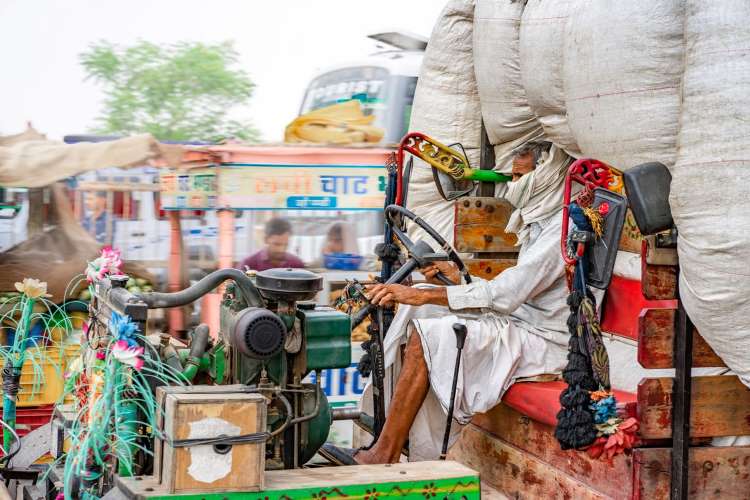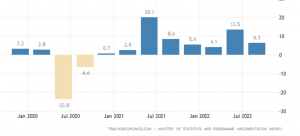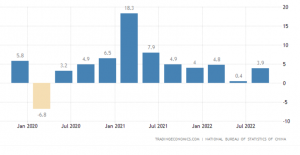
The state of Indian economy: The Indian stock markets have outperformed all major global markets in 2022. In a year that saw the S&P 500 index that covers large cap US stocks fall by 18%, Japan’s Nikkei 225 by 3%, Germany’s DAX by 10%, and Shanghai Composite Index by 10%, the Sensex was an outlier with close to 7.5% growth. India is the fastest-growing major economy with 5.5% average GDP growth in the last 10 years. It is expected to become the third largest economy sooner than later by overtaking Japan and Germany.
A Morgan Stanley report says India will feature more prominently on their radar along with the US and China, the largest economies in the world. There has been a slew of forecasts that predicted India’s rise in the global economy. Most famous among them was an article published in 2010 by the Economist which said Indian economy will overtake China’s in size. While the Indian economy grew in prominence in the last two decades, it continues to lag behind its northern neighbour.
READ | Bangladesh economy paying the price for exports-led growth
What is holding India back
India is a large and diverse country with a rich history and culture, and it has made significant economic progress in recent years. However, there are several socioeconomic factors that hold India back from achieving the kind of rapid economic growth experienced by China in the last three decades.
India annual GDP growth

China annual GDP growth

One of the main factors that has held India back is its relatively low level of infrastructure development. India has a large and growing population, but it lacks the kind of modern, efficient infrastructure necessary to support sustained economic growth. India’s population will soon surpass China’s and the country needs to build transportation networks, energy infrastructure, and telecommunications systems to benefit from its growing population.
Another factor that has held India back is its relatively low levels of education and skill development. While India has made progress in expanding access to education, there are still significant disparities in educational outcomes between different parts of the country, and the quality of education remains a concern. This limits the country’s ability to develop a skilled workforce capable of driving economic growth. The problem doesn’t end here. While there is a significant lack of skilled workforce, those who are capable tend to leave the country for better opportunities on foreign shores, a phenomenon called brain drain.
India is among the countries with the lowest public health spending. The government plans to invest 2.5% of the GDP in healthcare by 2025 at a time most nations spend in excess of 6%. India’s nutritional outcomes also present a paradox — India’s rich and middle classes suffer from obesity, while the poor suffers from malnutrition. Lack of investment in health and nutrition is another factor that weighs on India’s economic development prospects.
Other factors that hold India back include corruption, red tape, and inadequate government policies and regulations. These factors create barriers to investment and can discourage entrepreneurs and businesses from operating in India. Social factors such as caste system and an inability to increase women participation in the workforce also lead to India squandering away its demographic dividend.
The GDP conundrum
The Chinese economy is much more developed than India and the country takes advantage of its demographic dividend, something that India needs to learn. With a more diversified industrial base and stronger infrastructure, the Chinese economy is a behemoth which naturally gives the country an advantage in terms of GDP growth.
While both India and China experienced rapid economic growth in recent decades, Beijing has consistently grown at a faster rate than New Delhi. This is due in part to China’s more efficient state-led economic development model which has allowed it to invest heavily in infrastructure and industrial development.
READ | G20 presidency will test India’s global leadership credentials
There are also structural issues in India that have contributed to slower GDP growth. These include low levels of foreign direct investment, a complex and uncertain regulatory environment, and a lack of infrastructure in certain areas. Overall, it is a combination of these and other factors that has contributed to India’s GDP lagging behind China’s.
Why the world is rooting for the Indian economy
Despite its inherent shortcomings, the country has managed to draw appreciation in recent years for surviving the global economic slowdown. An economic recovery index run by the Financial Times and Brookings Institution called India a bright spot in October, so did the head of the International Monetary Fund. In a year of global upheavals, such views are heartening.
It is possible for India to emulate China’s economic miracle, but it will require significant effort and investment in areas such as infrastructure, education, health, and governance to overcome these challenges and unlock the country’s economic potential. India also needs to shift focus to regional disparities from polarisation ideologies if the political leadership is serious about making India a high middle income country.
